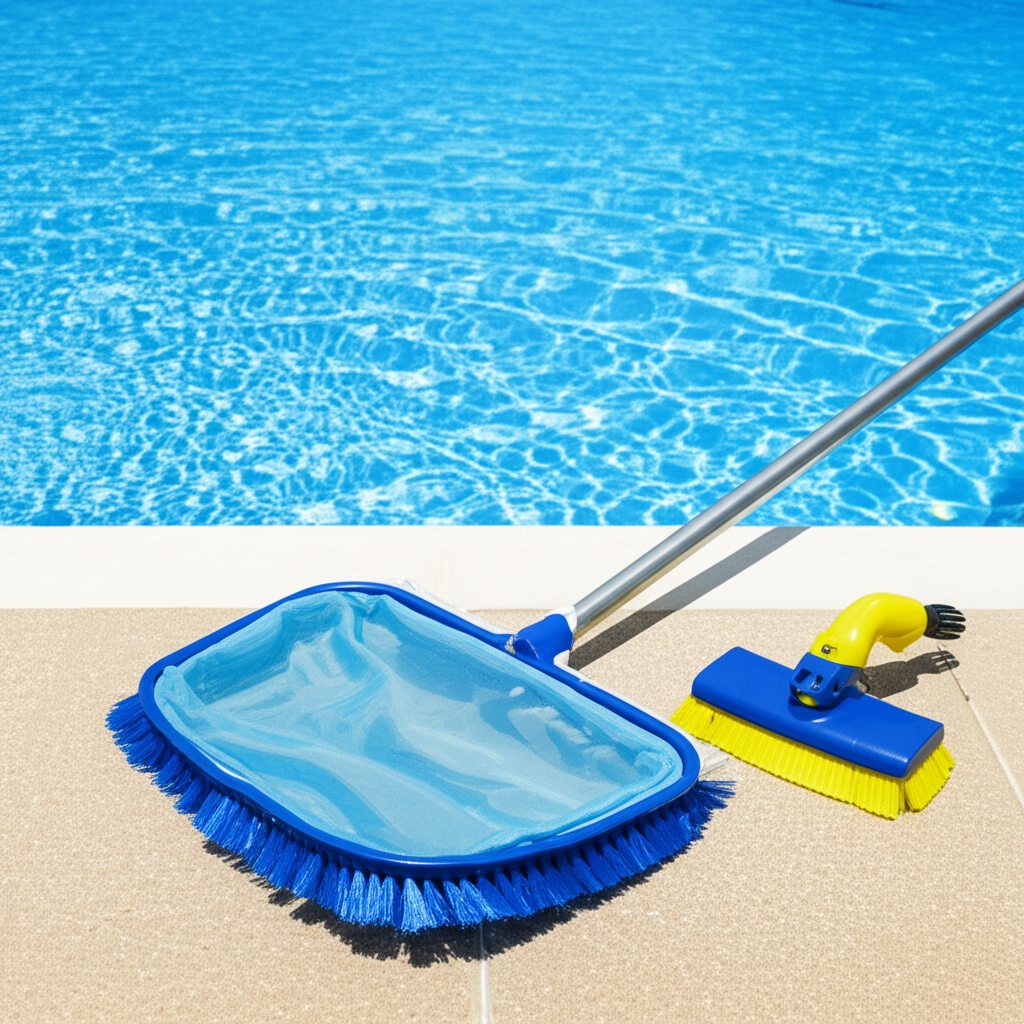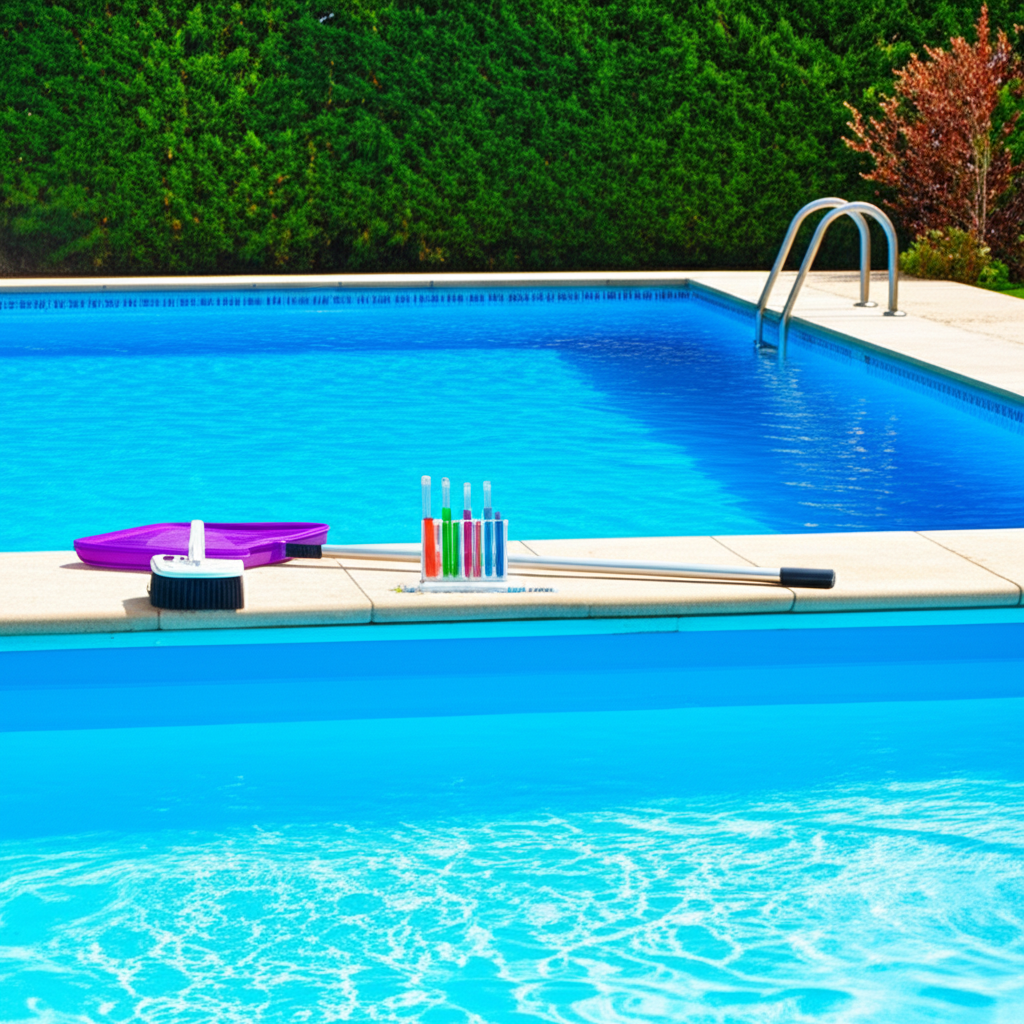- Understanding Basic Pool Maintenance Needs
- A Comprehensive Guide to Weekly Pool Care
- Daily or Every Other Day Tasks:
- Your Essential Weekly Pool Care Checklist:
- Beyond Weekly Pool Care
- Essential Tools for Basic Pool Maintenance:
Basic Pool Maintenance is the cornerstone of owning a swimming pool. Far from being a daunting chore, understanding and implementing a few simple, routine tasks can ensure your backyard oasis remains sparkling clean, safe, and inviting all season long. Neglecting your pool’s upkeep not only leads to unsanitary conditions but can also result in costly repairs down the line. Thankfully, with a little knowledge and consistency, effortless care is entirely achievable, allowing you to spend more time enjoying your pool and less time fixing problems.
A well-maintained pool is more than just aesthetically pleasing; it’s a healthier environment for swimmers and extends the life of your pool’s equipment and surfaces. Proper maintenance prevents the growth of harmful bacteria and algae, keeps the water crystal clear, and protects your investment. This article will guide you through the essential steps, transforming pool upkeep from a perceived challenge into a simple, manageable routine.
Understanding Basic Pool Maintenance Needs
At its core, pool maintenance revolves around three primary elements: circulation, cleaning, and chemistry. Mastering these three areas will cover the vast majority of your pool care responsibilities.
1. Circulation: Your pool’s pump and filter system are its heart and lungs. They circulate the water, pulling it through the filter to remove debris and then returning clean water to the pool. Adequate circulation is vital for distributing chemicals effectively and preventing stagnant areas where algae can thrive.
2. Cleaning: This involves physically removing debris from the water and surfaces of your pool. From leaves and bugs to dirt and grime, regular cleaning keeps your pool inviting and prevents organic matter from decomposing and affecting water chemistry.
3. Chemistry: Maintaining proper water chemistry is perhaps the most critical — and often most intimidating — aspect of pool ownership. Balanced water chemistry ensures sanitizers work effectively, prevents corrosion of equipment, protects pool surfaces, and creates a comfortable swimming environment for bathers.
A Comprehensive Guide to Weekly Pool Care
While a few tasks require daily attention, the bulk of your pool’s needs can be met through a consistent Weekly Pool Care routine. Adhering to this schedule is key to preventing issues before they escalate.
Daily or Every Other Day Tasks:
Skim the Surface: Use a long-handled skimmer net to remove floating debris like leaves, bugs, and pollen. This simple act prevents organic matter from sinking and breaking down, which can consume your sanitizer and cloud the water.
Empty Skimmer and Pump Baskets: Clogged baskets restrict water flow, reducing your pump’s efficiency and potentially leading to damage. Check and empty them whenever you notice a significant accumulation of debris.
Check Water Level: Ensure your water level is halfway up the skimmer opening. Too low, and your pump can run dry; too high, and your skimmer may not function properly. Add water as needed.
Your Essential Weekly Pool Care Checklist:
1. Test and Balance Water Chemistry: This is paramount. Invest in a good quality test kit (liquid drop kits are generally more accurate than strips). You should be testing for:
pH (7.4-7.6): Measures acidity/alkalinity. Low pH can cause corrosion; high pH reduces sanitizer effectiveness and can cause scaling.
Alkalinity (80-120 ppm): Acts as a buffer to stabilize pH. Low alkalinity causes pH to fluctuate wildly; high alkalinity makes pH difficult to adjust.
Chlorine/Sanitizer (1-3 ppm for Free Chlorine): The primary disinfectant. Ensure levels are consistently within the recommended range. Adjust based on usage and sunlight exposure.
Calcium Hardness (180-220 ppm): Protects plaster and equipment. Low hardness can cause plaster etching; high hardness can lead to scaling.
Cyanuric Acid (CYA) or Stabilizer (30-50 ppm): Protects chlorine from degradation by UV rays. Too low, and chlorine dissipates quickly; too high, and chlorine can become ineffective.
Adjust chemicals gradually, following product instructions carefully. Always add chemicals to the water, never water to chemicals, and allow time for them to circulate before retesting.
2. Brush Surfaces: Use a stiff-bristle brush (nylon for vinyl/fiberglass, wire for plaster) to brush down the walls, steps, and floor. This dislodges dirt, grime, and nascent algae growth, pushing it towards the main drain and skimmer for filtration. Pay special attention to corners and around ladders, where circulation can be poor.
3. Vacuum the Pool: Whether manually with a vacuum head, hose, and telescopic pole, or with an automatic pool cleaner, regular vacuuming removes debris that has settled on the bottom. Manual vacuuming allows you to target specific areas, while robotic cleaners offer hands-off convenience.
4. Inspect and Maintain Your Filter: Filters are crucial for water clarity.
Sand Filters: Backwash when the pressure gauge reads 8-10 psi above its clean starting pressure.
DE Filters: Backwash and recharge with new DE powder when the pressure gauge reads 8-10 psi above its clean starting pressure.
Cartridge Filters: Remove and rinse cartridges with a hose when the pressure gauge reads 8-10 psi above its clean starting pressure. Cartridges should be chemically cleaned 1-2 times per season.
5. Check Pool Equipment: Take a moment to visually inspect your pump, filter, heater, and other equipment for any unusual noises, leaks, or signs of wear. Early detection of issues can prevent more significant problems. Ensure all return jets are aimed to promote good circulation throughout the pool.
Beyond Weekly Pool Care
While the weekly routine covers most needs, remember that seasonal factors like heavy rain, extreme heat, or high bather loads may necessitate more frequent checks and adjustments. Opening your pool for the season and properly closing it down for winter are also critical, though typically less frequent, maintenance tasks that preserve your pool’s condition.
Essential Tools for Basic Pool Maintenance:
Telescopic Pole
Skimmer Net
Pool Brush (Wall and Corner)
Pool Vacuum (Manual or Robotic)
Water Test Kit (Strips or Liquid Drops)
Pool Chemicals (pH increaser/reducer, alkalinity increaser, chlorine/sanitizer, calcium hardness increaser/reducer, CYA)
Filter Cleaning Tools (if applicable)
By integrating these basic, yet vital, tasks into your routine, you’ll discover that proper pool care isn’t a chore, but rather a simple commitment to preserving the joy and beauty of your swimming oasis. Consistency is your best friend when it comes to maintaining a stunning, healthy pool.




